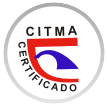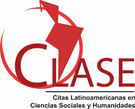Comprobación de calidad de agua y bioacumulación de contaminantes mineros en tejidos Ooncorhynchus mykiss en cuencas hidrográficas y piscigranja de Lircay-Huancavelica
Abstract
La investigación tuvo como objetivo comprobar la calidad de agua y bioacumulación de contaminantes mineros en tejidos de Oncorhynchus mykiss “trucha arco iris” en los ríos Sicra, Opamayo y piscigranja de Ocopa Lircay Huancavelica. Se ubicaron puntos de muestreo, recolectando muestras de agua y truchas. Se realizó la incineración y digestión; analizando con el espectrofotómetro de absorción atómica; cuyos resultados para muestras de agua en Sicra fueron: arsénico, cadmio y plomo con -0.7711, -0.0021 y 0.0690 mg/l; en Opamayo -1.1508, 0.0016 y 0.0474 mg/l y piscigranja de Ocopa -1.2375, -0.0003 y 0.0252 mg/l respectivamente. La mayoría de valores están debajo de los límites máximos permisibles LMP, excepto el plomo en Sicra fue 0.0690 mg/l superando los LMP, frente al Decreto Supremo N° 015-2015-MINAM es 0.05mg/l. En truchas del Sicra, el contenido de Pb en víscera fue 1.4061 mg/kg y muestras de piscigranja en piel fue 4.5184 mg/kg; resultados que superan los LMP según Organismo Nacional de Sanidad Pesquero SANIPES y UNION EUROPEA que es 0.3 mg/kg. El estadístico R de Pearson P>0.05 valida la hipótesis, siendo la correlación de contenido de metaloide y metales entre agua y trucha, resulta entre 0.023 y 0.844, significando valor positivo. Concluyendo que incidió la contaminación del agua en la trucha, consecuentemente la calidad de agua no es óptima evidenciando la afectación de origen minero.
Palabras clave:
Calidad de agua, bioacumulación, contaminantes mineros, trucha arcoíris, absorción atómica.
ABSTRACT
The objective of the research was to verify the water quality and bioaccumulation of mining pollutants in tissues of Oncorhynchus mykiss "rainbow trout" in the Sicra, Opamayo and fish farm of Ocopa Lircay Huancavelica rivers. Sampling points were located, collecting water and trout samples. Incineration and digestion were performed; analyzing with the atomic absorption spectrophotometer; whose results for water samples in Sicra were: arsenic, cadmium and lead with -0.7711, -0.0021 and 0.0690 mg / l; in Opamayo -1.1508, 0.0016 and 0.0474 mg / l and Ocopa fish farm -1.2375, -0.0003 and 0.0252 mg / l respectively. Most of the values are below the maximum permissible PML limits, except for the lead in Sicra was 0.0690 mg / l, exceeding the PML, compared to Supreme Decree No. 015-2015-MINAM is 0.05mg / l. In Sicra trout, the Pb content in viscera was 1.4061 mg / kg and fish farm samples in skin was 4.5184 mg / kg; results that exceed the LMP according to the National Fisheries Health Agency SANIPES and the EUROPEAN UNION, which is 0.3 mg / kg. The Pearson R Statistic P> 0.05 validates the hypothesis, being the correlation of metalloid content and metals between water and trout, it results between 0.023 and 0.844, meaning a positive value. Concluding that water contamination had an impact on the trout, consequently the water quality is not optimal, evidencing the impact of mining origin.Keywords:
Water quality, bioaccumulation, mining pollutants, rainbow trout, atomic absorption.Downloads
Published
How to Cite
Issue
Section
License
La editorial "Universo Sur", de la Universidad de Cienfuegos, publica el contenido de la Revista "Universidad y Sociedad" bajo una Licencia Creative Commons Atribución-NoComercial-SinDerivar 4.0 Internacional.
© Podrá reproducirse, de forma parcial o total, el contenido de esta publicación, siempre que se haga de forma literal y se mencione la fuente.









